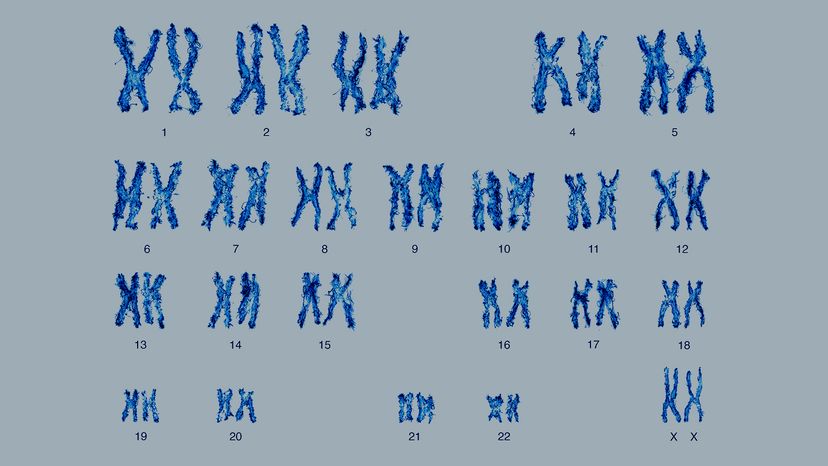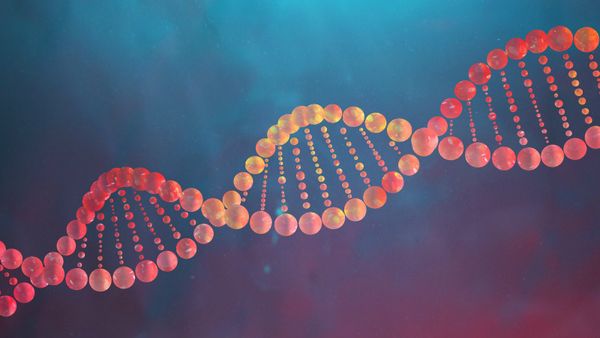To understand what chromosomes are, you first have to understand what DNA is. Formally known as deoxyribonucleic acid, DNA is a complex molecule found in all plants and animals. It's found in almost every cell of an organism's body, and it contains all the information necessary to keep that organism up and running (and developing and reproducing). DNA also is the primary way organisms pass on hereditary information. In the process of reproduction, a portion of DNA is passed along from parent to offspring. In short, DNA is what tells the story of your totally unique biology.
As you can probably imagine, DNA has to be pretty long to hold all that important info. And it is — if you stretched the DNA in just one cell all the way to its full length, it would be about 6.5 feet (2 meters) long, and if you put the DNA in all your cells together, you'd have a chain about twice the diameter of the solar system.
Luckily, cells are pretty smart and have an ingenious way of packaging all that info into space-efficient parcels. Enter: the chromosome.
With its name rooted in the Greek words for color (chroma) and body (soma), the chromosome is a cell structure (or body) that scientists can spot under a microscope by staining it with colored dyes (get it?). Each chromosome is made up of protein and — you guessed it — DNA.
Every chromosome contains exactly one molecule of DNA, to be exact, and that long string of genetic info is tightly wrapped around the protein (called a histone), which acts like a spool, efficiently bundling the lengthy, info-rich molecule into the perfect size and shape to fit inside the nucleus of a cell. Every human cell has 23 pairs of chromosomes for a total of 46 (aside from sperm and egg cells, which each contain only 23 chromosomes).



